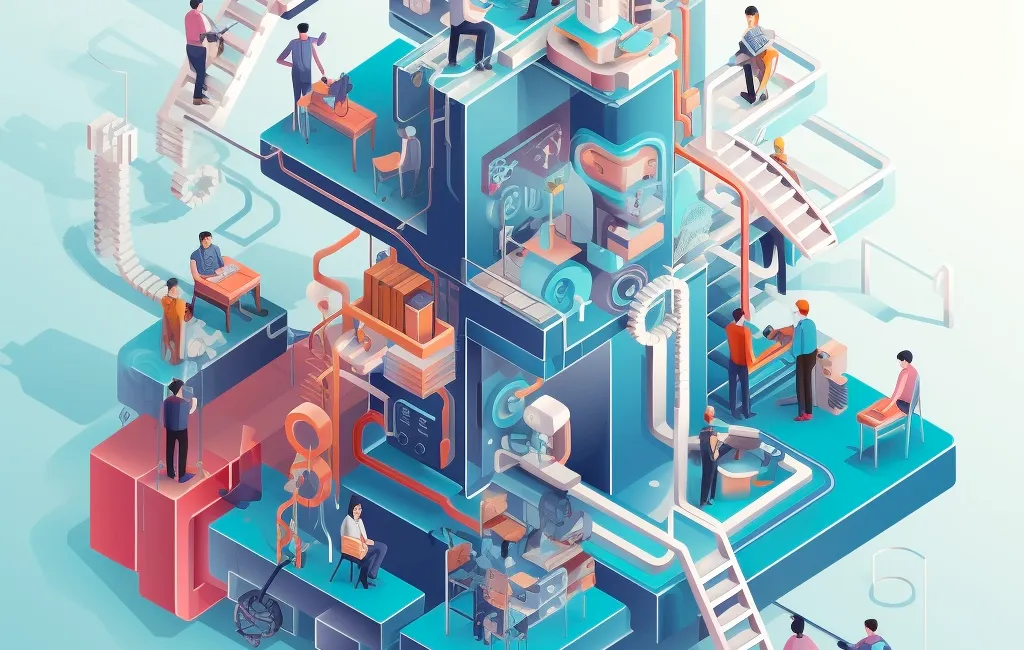Hi everyone,
Have you ever found yourself juggling between tasks, thinking you excel at multi-tasking, or are you in the camp of 'I can't multi-task'?
Today we're diving into "task switching," uncovering its impacts and the underlying science. Is it the productivity hack you think it is? Or is it just an illusion?
What is task or context switching?
Task or context switching refers to the act of shifting your focus and attention from one task or activity to another. It involves stopping one task, saving its progress, and then starting a new task. This can happen within a short period or throughout the day as you switch between different projects, assignments, or responsibilities. Task switching requires mental effort and can have both positive and negative effects on productivity and cognitive performance.
The Allure of Multitasking
It is a common scene: You've got twenty tabs open, shuffling between emails, work tasks, and that cute cat video your friend sent demanding your attention on your phone.
On the surface, it seems like we're getting more done. We're busy and active, hopping from one thing to the next. But there is a catch: constant task switching can give the illusion of productivity. But is it real efficiency or just a comforting fallacy? That is the question I want to explore further.
Multitasking, as alluring as it sounds, often boils down to quick shifts in focus rather than handling multiple tasks simultaneously. This can lead to a decrease in productivity and a false sense of efficiency.
The science behind task switching
Neurologically speaking, our brains aren't wired to process multiple tasks at the exact same time. It's about rapid shifting, which can strain our cognitive capacities.
A study by Stanford University revealed multitaskers performed worse in cognitive tasks compared to those who focused on single tasks. They were more susceptible to distractions and retained fewer details. While it feels like we're doing more, the constant swap drains our mental energy faster. Every switch is like revving a car's engine unnecessarily. Continuous task switching can lead to a 40% drop in productivity, longer completion times, and increased chances of errors. It is important to prioritise tasks and limit unnecessary swapping to maintain optimal productivity.
How can I avoid task switching and improve productivity?
One effective strategy is to create a schedule or to-do list that outlines the tasks that need to be completed and their respective deadlines. By organising and prioritising tasks, you can focus on one task at a time without the need for constant switching. Additionally, setting aside dedicated blocks of time for specific tasks can help minimise distractions and interruptions, allowing for better concentration and efficiency.
Balancing Perspectives
In some fast-paced roles, swift task switching can be necessary. Think ER doctors, chefs in bustling kitchens, or stock traders. But for most of us, deep work—focusing intently on a singular task—yields the best results, both in efficiency and quality.
When I start work, I switch off my personal phone's notifications. I have blocked off time in the morning for focused 'deep work' sessions.
Yet, some argue short breaks or diversions can replenish cognitive capacities. A brief switch, like a 5-minute doodle session in a 2-hour focused work stretch, might not be detrimental. I'm a fan of taking short breaks or engaging in brief diversions to maintain productivity and mental clarity throughout the day. During a 3-hour focus block, I usually do 25-minute blocks of focused work and then a 5-minute break.
How do you get better at task switching?
In case your job demands it and you are required to switch between tasks frequently, here are some tips to get better at it. To improve task switching, it can be helpful to practise mindfulness and self-awareness. By being conscious of when you start to feel fatigued or unfocused, you can intentionally take short breaks or switch tasks to prevent burnout. Additionally, establishing a structured schedule with designated break times can help train your brain to transition between tasks more efficiently.
Conclusion
While the urge to juggle might be compelling, it's essential to discern when task switching helps and when it hinders. Prioritise focus, especially for crucial tasks, and remember: sometimes, doing less at once is doing more in the long run.
Your Actionables:
- Monitor your work habits for a day. How often are you switching? How often do you switch tasks unnecessarily?
- Test out focused work intervals. Perhaps the Pomodoro Technique?
- Check your efficiency and quality at the end of a switch-less day. Feel the difference?
Until next time,
Regina

